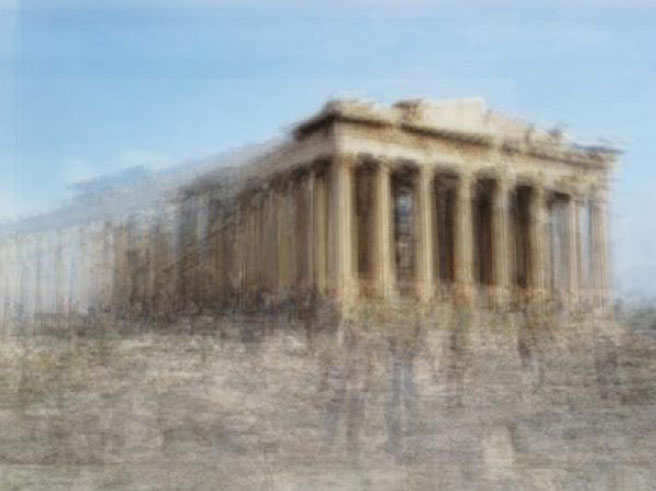Déjà vu anyone? Whirlwind vacations are jam-packed with renowned monuments, foreign architecture and prominent statues – all of which must be captured and documented, then uploaded, emailed and filed away. Corinne Vionnet’s Photo Opportunities brings those blurred trips into focus by drawing on our collective memories, while tugging at questions of significance and personal experiences.


What brought you into photography?
Photography has always been very present in my family. I received my first camera when I was 8 years old. My father used to draw and paint a lot, and as an architect with a passion for geography, he used to share his knowledge. Maybe this is where I could find an explanation for the importance of the image for me, as well as my orientation for my projects. I made the spontaneous decision to really get into photography at age 35.
Tell us a little about your series Photo Opportunities.
By weaving together this multitude of snapshots of the same landmark, Photo Opportunities tries to speak about our collective memory and the influence of image through films, advertisements, postcards, the Internet, etc. It raises questions about our motivations to make a photograph and our touristic experience. It visualizes our image consumption and how ubiquitous images actually are.
The idea of Photo Opportunities came during a long weekend in Pisa with my husband. During our stay there, we went to see (of course) the Leaning Tower. There were already many tourists there and many of us were photographing the attraction from the park. The choice of this location was certainly due to the angle of the tower, but also the space allowed us to easily photograph the building in its entirety. During the hour we were there, I was wondering if all these pictures looked the same. And because there were already many digital cameras in 2005, I was wondering if I could find similar images on the Internet. Once back home, I went through numerous online collections of snapshots of the Leaning Tower, following keyword searches such as “pisa” or “leaning tower”. That sparked my interest for these ubiquitous tourist photos, which led to my series Photo Opportunities.
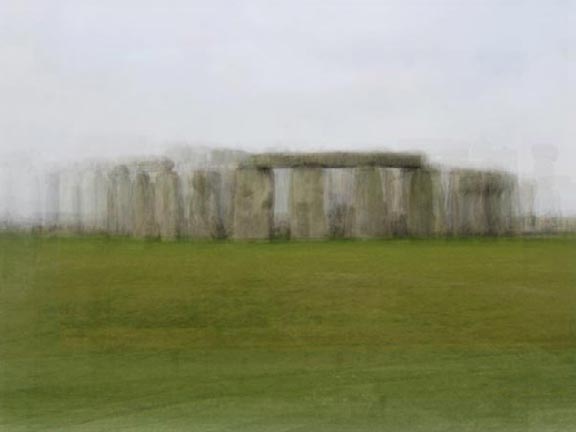

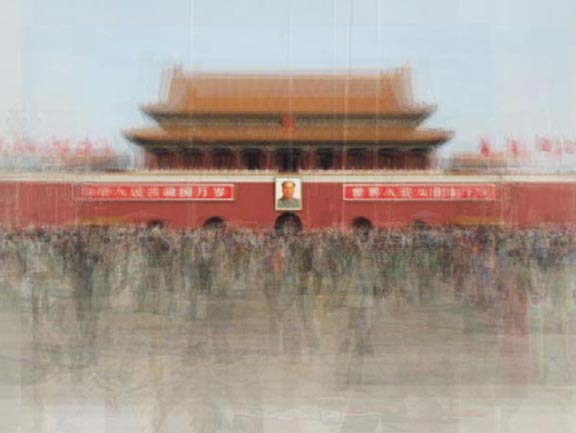

Walk us through your process and what is involved in making these images.
I’m not interested in digital manipulation, but how images are disseminated online. The process is only one of the steps in reaching what I want to express. I thought that the way of translating my questions about our collective memory was to layer a multitude of snapshots found on the Internet using a transparency effect, creating one final image. I also wanted this work to have an aesthetic relation to classic painting and etching, as they too have contributed to our knowledge of landscape and monuments.
For one image, I was visualizing thousands of shots of the same place on the Internet to see and understand what the most consistent shape of the landmark was. I was collecting different images that I wanted to layer together, each depicting day, night, different seasons, different skies, etc. I used a single focal point to line up the transparencies, and for the rest, whatever happened, happened.
My choice of places was originally based on tourist statistics, and I found myself examining travel agency brochures to know which images symbolized a destination. My process wasn’t very systematic. I used the photos more as a palette to achieve an impressionistic image. The final images remain in a state of personal interpretation, certainly showing my own visual ideals.
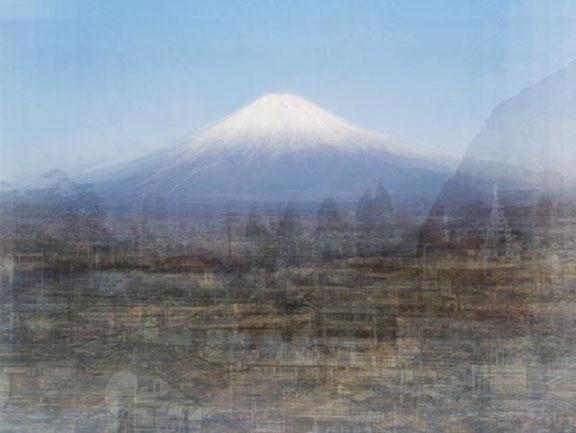

When we go and visit these famous sites, we already have an idea of what we will see. The perception we had of a place has an impact on our personal experience.
People can no longer take in the sights for what they are; they have to document and bring it home with them to prove that they were there. Seeing these same images found in photo albums across the world, what does that say about our international landmarks? Are they moving from extraordinary to ordinary?
The photographs of these landmarks certainly solidify the admiration we have for them. It shares a feeling of that unique moment and it proves the invisible presence of the photographer who stood on those grounds and took the image. But photography also changes how we see and what we see. When we go and visit these famous sites, we already have an idea of what we will see. The perception we had of a place has an impact on our personal experience.


Photo Opportunities has this ability to make you feel like you are a part of something bigger, interacting with people all over the world who have stood in the same place and have taken the same photographs. But the strange part of it is that it can also make you feel the opposite. Seeing these images in this context, there can be feelings of insignificance, because there are millions of other people who share the same experiences. Straddling the line between making the viewer feel important as well as insignificant, where do these photos sit for you?
As a people, we are certainly seeing more travel. Before, these special moments were photographed and remained in our photo albums. These albums were shared with close friends and family, representing our “wonderful holidays”. This intimacy has disappeared with the Internet, where millions of pictures have been muddled up, becoming anonymous.
From this Internet platform where these shots have become increasingly insignificant, Photo Opportunities has tried to bring together these special instants for each of us. By gathering them together, these moments are merged, people are encountered, skies are shaped, and stories are built. Each image is a personal memory, and once they are merged, they become shared memories.
Your work references how memories can shift and become hazy, and it shows other versions of the same event. I find it fascinating that you created an image of the World Trade Center in New York, years after 9/11. That specific piece resembles a memory on many different levels. Tell us a little bit about the permanence of landmarks around the world, natural or man-made, and how your work comments on the idea of time, change and the memory of these structures.
Famous landmarks are part of our collective memory. I see souvenirs as ghosts: ghosts living somewhere and coming back to the surface from time to time. One cannot always remember precisely a moment or a place, but more a feeling. The souvenir is constantly transformed and maybe even idealized with the time. These landmarks are replaced by the souvenir- hazy, unspecific moments, conjuring the idea of a place more than the place itself and a feeling of the passing time.
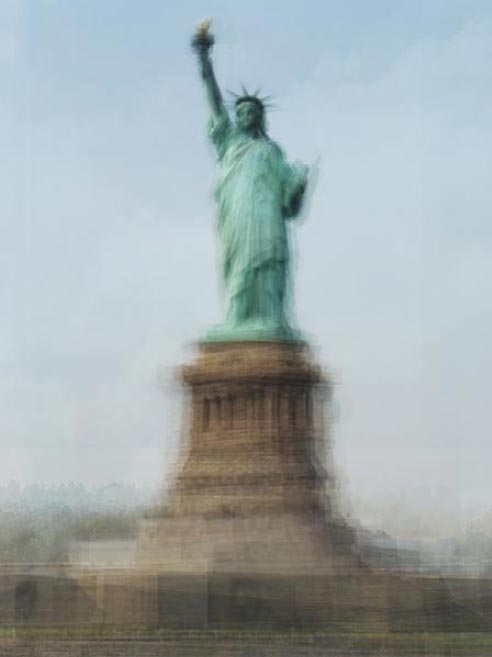
These landmarks are replaced by the souvenir- hazy, unspecific moments, conjuring the idea of a place more than the place itself and a feeling of the passing time.
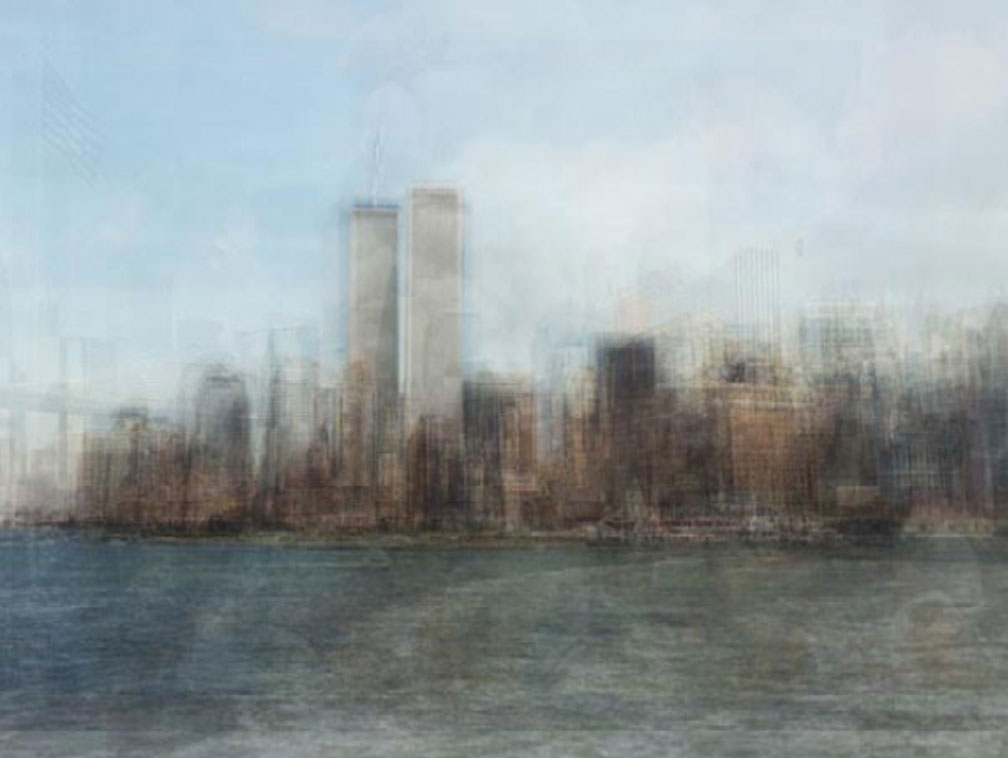

The Internet has completely changed the face of the art world, from how art is made, to how it’s seen, and even how it functions. In your opinion, do you think art, not necessarily in your own work but in general, has been enriched because of the Internet, or has it lost something?
As for each evolution, whatever it is, it brings various consequences, good and bad. The phenomenon of the Internet, with its richness, and poverty, changes our behavior, and cannot leave us without certain thoughts. It encourages us to look at what is happening, and to express our own ideas. It’s necessary. The way art is seen or how it functions is almost inevitable. The Internet is such an accessible tool that enables us to do so many things. I remain very curious about how things will evolve or change in the future.
Photo Opportunities has been gaining worldwide exposure and a lot of praise. What has this experience been like for you as an artist, and what are you looking forward to?
The source of the images in Photo Opportunities is the Internet. It is interesting to see that these images have come full circle, back to where they come from. The digital evolution over the past 10 years has brought us to a modification of our behavior. I have to admit that I swing between worry and fascination for this phenomenon, and I am so excited to explore further.




